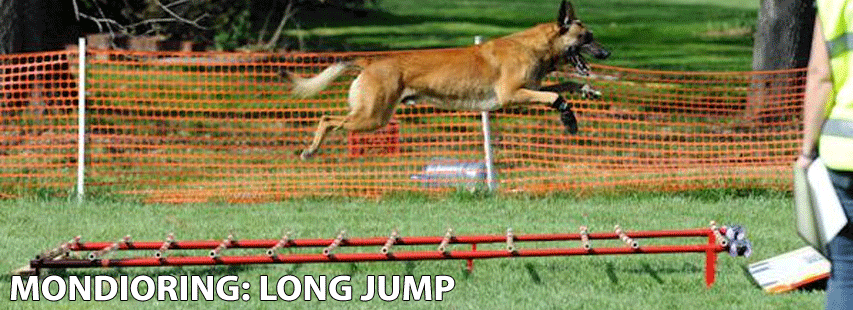Long Jump
Regulation lengths and points
| Length(m) | 3.0 | 3.5 | 4.0 |
| Level I | 15 | ||
| Level II | 10 | 15 | |
| Level III | 12 | 16 | 20 |
In Level I, only one length: 3 m = 15 points

PENALTIES:
Dog starts after Judge's signal but before command
Command by voice and gesture
Refusal or going around, forward or return jump
Knocking down the boards, forward or return jump
Missing (attempt failed) forward or back.
Failure to take position behind the obstacle (if command is given)
Any additional command for position, placement, recall
Any additional send command
The dog does not return to heel within 10 s
Any irregular command results in a penalty to the corresponding points.
This exercise does not involve a ditch. It is made up of a frame of 3 planks. The first is 2 m long and 10 cm high, placed in the front, connected with two boards on the sides, each 3 m long and 10 cm high in front, and 20 cm high at the other end and fastened to the ground with a metallic square, to prevent it from swaying.
This frame has coloured elastic bands, light metal bars, or PVC pipes, which are fastened to the side boards every 30 cm along the length of the sides.
Without going into the frame, the dog shall jump over a moveable seesaw ‘key’, 1.95 m long and 1 m wide at the centre, which can move up or down in the frame without touching the sides. Jumps of 3 m to 3.5 m can be obtained. To create a jump of 4 m, simply detach the key from the frame. The key must be constructed so that when the low side touches the ground, the high side is 30 cm from the ground. A dog that steps within the frame is penalized 4 points, plus the loss of an attempt equivalent to a refusal. It must then restart the jump.